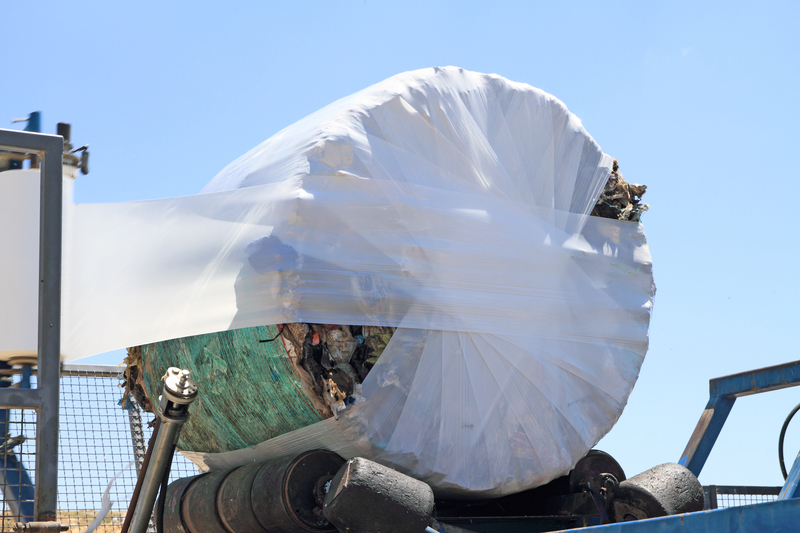Transform Your Wardrobe Waste into Treasure: Recycle Old Clothes for a Sustainable Future
Fast fashion and excessive consumption have resulted in overflowing closets and mounting landfills. Are you looking for ways to recycle old clothes and make a real impact? Welcome to the ultimate guide designed to show you how to transform wardrobe waste into treasure while embracing sustainability, creativity, and eco-conscious living.
Why Should You Recycle Old Clothes?
Each year, over 92 million tonnes of textile waste end up in landfills. The environmental impact is immense, from water pollution to carbon emissions. By choosing to repurpose and recycle your old clothes, you're not only reducing waste but also contributing to a cleaner planet. Here are some reasons why recycling your wardrobe makes a difference:
- Reduces landfill waste: Extends the life of textiles and lessens space in landfills.
- Conserves resources: Saves water, energy, and raw materials needed for new garments.
- Supports a circular economy: Keeps materials in use and minimizes the need for new resources.
- Promotes creativity: Encourages you to find innovative and stylish solutions for outdated clothing.
Understanding Your Wardrobe Waste
Before diving into recycling, it's essential to assess your wardrobe. Most people keep clothes they never wear out of habit or nostalgia. Start your journey by:
- Sorting your clothes: Make three piles: keep, donate/sell, and recycle.
- Identifying unwearable pieces: These are ideal for upcycling or recycling projects.
- Inspecting for stains or damage: Not all clothes can be donated, but many can still be recycled.

Creative Ways to Recycle Old Clothes
Recycling clothes does not always mean turning them into cleaning rags. Let's explore innovative techniques to upcycle and repurpose textiles in your home.
1. DIY Fashion Makeovers
Transform torn jeans into trendy shorts, old t-shirts into crop tops, or oversized shirts into chic dresses. Simple sewing or even fabric glue can refresh your old clothing into fashionable pieces. Look for inspiration on platforms like Pinterest or Instagram, and enjoy the fun of personalizing your outfits.
- Add patches, embroidery, or paint to personalize and modernize basics.
- Shorten or tailor pants and dresses for a perfect new fit.
- Combine fabrics to create unique hybrid garments, such as a patchwork skirt.
2. Home Decor from Textiles
Your old clothes can quickly find new life outside your closet. With a bit of imagination:
- Pillows and cushions: Use cotton shirts or jeans to sew stylish pillow covers.
- Quilts and throws: Patchwork quilts are a classic way to preserve memories.
- Rugs and mats: Cut garments into strips and braid or crochet colorful rugs.
- Wall art: Frame interesting prints, fabrics, or logos for unique wall decor.
3. Accessories Reimagined
Repurpose t-shirts and scarves into headbands, bracelets, or even tote bags. Denim, with its sturdy fabric, is perfect for making phone covers, wallets, and belts. These projects are not only fun and easy but also make for thoughtful gifts.
- Jewelry: T-shirt yarn necklaces and braided bracelets are sustainable and stylish.
- Bags: Turn old jeans or jackets into roomy totes or makeup bags.
- Pet toys: Knot and braid fabric scraps for entertaining your furry friends.
4. Craft Supplies for Kids and Adults
Textile scraps from old clothing can serve as excellent craft materials for all ages:
- Stuffed toys -- soft, safe, and colorful!
- Scrapbook and decorations -- add texture and dimension to creative projects.
- Costume parties -- upcycle unused garments into imaginative costumes.
How to Donate or Exchange Old Clothing
Not all wardrobe waste requires a DIY solution. If your clothes are in good condition, consider donating, selling, or swapping them.
Donation Options
- Local charities and shelters: Clothes in wearable condition help those in need.
- Clothing drives: Participate in community programs for wider reach.
- Online giving platforms: Use websites and apps dedicated to clothing donations.
Selling and Swapping Clothes
- Online marketplaces: List items on eBay, Depop, or Poshmark for extra cash.
- Clothes swaps: Host or join community events to revamp your wardrobe sustainably.
- Consignment stores: These shops offer another avenue to sell gently used items.
Best Practices for Donating
- Wash and fold all items before giving away.
- Check quality standards of the organization accepting clothes.
- Label items if possible (e.g., children's sizes).
Where to Recycle Unusable Textiles
Garments that are stained, ripped, or otherwise unfit for wear can still avoid landfill through textile recycling programs. Here's how you can ensure every last piece of clothing finds a new purpose:
Find Local Textile Recycling Centers
Many municipalities and private companies operate clothing recycling drop-off bins or pick-up services. Google "clothes recycling near me" to locate your closest center.
- Council recycling: Check your local authority's website for textile drop-off locations.
- Supermarket or parking lot bins: Many larger shops and parking areas collect unwanted clothes.
- Specialty recycling companies: Some organizations collect and repurpose textiles for industry use.
Brand Take-Back Programs
Major fashion retailers are increasingly offering buy-back or recycling incentives for old clothing. Examples include:
- H&M's Garment Collecting Program -- bring any brand, any condition for recycling in exchange for a discount.
- Levi's -- return old denim to select stores for responsible recycling.
- The North Face Clothes the Loop -- incentivizes in-store drop-offs for used items.
What Happens After You Recycle Clothes?
Recycled textiles go through a variety of processes to create new products:
- Mechanical recycling: Fabrics are shredded and respun into new yarn or insulation materials.
- Chemical recycling: Advanced facilities break down fibers to create "virgin" quality textiles.
- Industrial uses: Shredded material may become stuffing, rags, or soundproofing.
The Growing Industry of Textile Upcycling
Clothing upcycling has evolved into a global movement. Innovative brands and designers are reimagining how old garments can create high-fashion statements and everyday products. By understanding how to recycle old clothes in your own life, you're joining a movement towards a more sustainable fashion system.
Famous Upcycled Fashion Projects
- Patagonia: Famous for their Worn Wear program & recycled materials.
- Re/Done: Transforms vintage jeans into high-end, contemporary silhouettes.
- Stella McCartney: Advocates for closed-loop (cradle-to-cradle) fashion.
Tips for a Circular Wardrobe
Adopting sustainable fashion habits extends well beyond using recycling bins. Here's how you can further minimize wardrobe waste:
- Buy quality over quantity: Invest in timeless pieces designed to last.
- Choose sustainable brands: Look for companies with transparent recycling or upcycling commitments.
- Mend and care: Learn basic repair skills and proper washing techniques.
- Organize regular wardrobe audits: Keep your collection manageable and mindful.

The Environmental Impact: Why Every Action Matters
Did you know that giving a garment a second life can reduce its carbon footprint by up to 30%? Landfills are overflowing with textiles, many of which can be repurposed, resold, or recycled. By understanding the impact of your choices and discovering waste-to-treasure solutions, you become part of the solution to fashion's environmental crisis.
- Each recycled t-shirt saves 2,700 liters of water.
- Less landfill methane = less global warming potential.
- Recycling reduces demand for virgin materials and supports ethical practices.
Your Step-By-Step Guide to Recycling Old Clothing
Ready to take action? Here's a quick roadmap to recycle wardrobe waste today:
- Check your closet: Sort and inspect what you no longer need.
- Decide the destination: Donation, resale, DIY upcycling, or textile recycling center.
- Prepare items: Clean, repair minor issues, and pack appropriately.
- Drop off or ship: Find your nearest bin, charity, or brand program.
- Track your impact: Set a goal to reduce wardrobe waste every season.
Conclusion: Reimagine, Reuse, Recycle -- and Make Fashion Sustainable
Recycling old clothes isn't just a trend -- it's an essential step towards a greener, more mindful future. Whether you're hosting a clothing swap, creating art from scraps, or donating to a charity, every action helps close the loop. Transform your wardrobe waste into treasure today and inspire others to do the same.
Let's build a future where nothing is wasted and creativity turns old clothes into valuable resources. The change begins in your closet!